As I described in last week’s post, at least here in the US, we have serious challenges befalling us with plastic recycling along with a host of waste plastics that can never be recycled. A recycling infrastructure built almost exclusively on exporting masses of “dirty” recycling to China now has the recycling system here in the US is in shambles when China stopped taking recycling. Further, so many plastics simply can’t be recycled, meaning that even well-meaning folks who recycle everything they can still end up throwing away enormous amounts of single-use plastics, packaging, film, and other waste. In permaculture design terms, it is time to turn some of this waste into a resource! So in today’s post, I’d like to explore the concept of making ecobricks as a way to sink large amounts of unrecyclable waste into a productive resource and share some designs and ideas for using ecobricks for building projects.
Ecobricks, also known as Bottle Bricks, are a concept that has been growing in popularity, particularly in developing nations who are awash with plastic. When we have plastic literally filling up oceans, streams, and communities, communities start looking for ways of dealing with that plastic–and ecobricks are one of the solutions that everyday people are creating. In a nutshell, you take a plastic bottle, fill it with unrecyclable plastic, and use it as a building tool for all kinds of projects. If combined with other kinds of sustainable building techniques, like Cob, it is a building tool can be used again and again, in the event that the original thing you built you want to dismantle.
Why are Ecobricks a spiritual and sustainable practice?
Ecobricks present multiple kinds of “solutions” and benefits. Before getting into the specifics of how to make them, I want to share these benefits.
Accessibility and empowerment. The first thing I really like about ecobricks as a sustainable solution is that they are easy enough that anyone can make them. And everyone has access to the basic materials (which are all free, and all considered waste). Even if you choose not to use ecobricks in your own project, there is a global network of people who are making them to contribute to community projects (see more at grobrick.com).
Raising awareness and raising plastic consciousness. Saving up the plastics for ecobricks (and seeking out additional plastics) helps shift one’s own awareness about the proliferation of plastic. New studies have recently demonstrated the serious toll that plastic is having in the world, from drinking water to oceans to our own bodies. By treating it as a resource and changing your relationship to plastic, it helps you raise your own “plastic consciousness” in terms of both how much plastic you consume, but also, how much would get thrown away if you weren’t creating ecobricks.
Magic and intention. Making the ecobricks has a deeply spiritual side, a kind of sacred action. Because it takes a long time to make ecobricks, as you create, it becomes a kind of meditation. As you push the plastic into the brick, you can meditate on the world you are creating, rather than the world that created that plastic. You can write on the ecobrick your hopes and dreams for the future, as many people do all over the world–these then become a way of doing both inner and outer alchemy through the transformation of waste plastic into a resource. The brick-making becomes a magical act to help us create a different future.
Accountability. When it comes to plastic, people in privileged places often have an “away” mentality. Thus, our goal is to make the plastic go away as soon as it no longer serves us. Plastic packaging is wanted till the plastic is out of the package–then it needs to go away as fast as possible. Recycling allows it go away (at least mentally). But the truth is this: no plastic ever goes truly away. We are each personally responsible for the plastic we create demand for: from being willing to purchase plastic products to forgetting one’s reusable grocery bags and asking for plastic, that plastic is now yours. Ecobricks allows us to take a personal responsibility for plastics. And responsibility changes our relationship not only with the plastic but with the land, who suffers too often from humanity’s plastic addiction.
Ecobricks as a Transitioning Technology. Obviously, plastic is not sustainable–the very opposite. We know that plastic, out in the ecosystem, causes serious concernes environmntally and for the health of all beings. A lot of people are moving away from plastic, into zero-waste lifestyles, and really evaluating the plastic in their lives. Ecobricks are a transition tool–the more plastic you are able to lock up in ecobricks, the more you don’t allow back into the environment. This page explains this concept more in depth.
I hope that the above is enough to convince you that this is a great possibility for your own plastic! Now let’s take a look at how to make the bricks and what projects you can build with them.
Making an Ecobrick: Step by Step Instructions
The process of making an ecobrick is simple, and I’ll walk through it step by step. First you gather up your materials. Since I’m working on a “big project” that will probably require several hundred bricks, I’m being really methodical about it. I keep every bit of non-recyclable plastic in plastic bags and keep these near the recycling, compost, vermicompost, and trash in my home. Thus, there are now five options: vermicompost for coffee grounds and food scraps, compost for any other organic material, recycling for regular materials that can be recycled, and the ecobrick station for everything else. This means very little goes in the trash! I also am prepared to gather up any excess plastic in other locations that I frequent–my workplace, places I hike, etc. I’m also in the process of recruiting friends and family to help me create more ecobricks or, at the least, save me their plastic for me to create more.
This first image is a collection of about a month of saving plastic from the sources listed above. Into my wheelbarrow goes everything from unavoidable one use plastic (such as straws, plastic silverware), twist ties, bread bags, styrofoam, plastic baggies, plastic packaging, films, wraps, and so forth. I gathered a lot of this from my workplace and also as trash along the side of the road or in the woods. Once you start collecting, you’ll be surprised how easy it is to collect and how quickly you can gather enough for one brick. For example, a local picnic used 15 plastic tablecloths, which I gathered up and stuffed into a brick, making almost one full brick from that single picnic!
Here are two more photos of some of the selection from my most recent ecobrick making time: some food packaging that isn’t recyclable from bread, quinoa, and avocado, just to give you an idea:
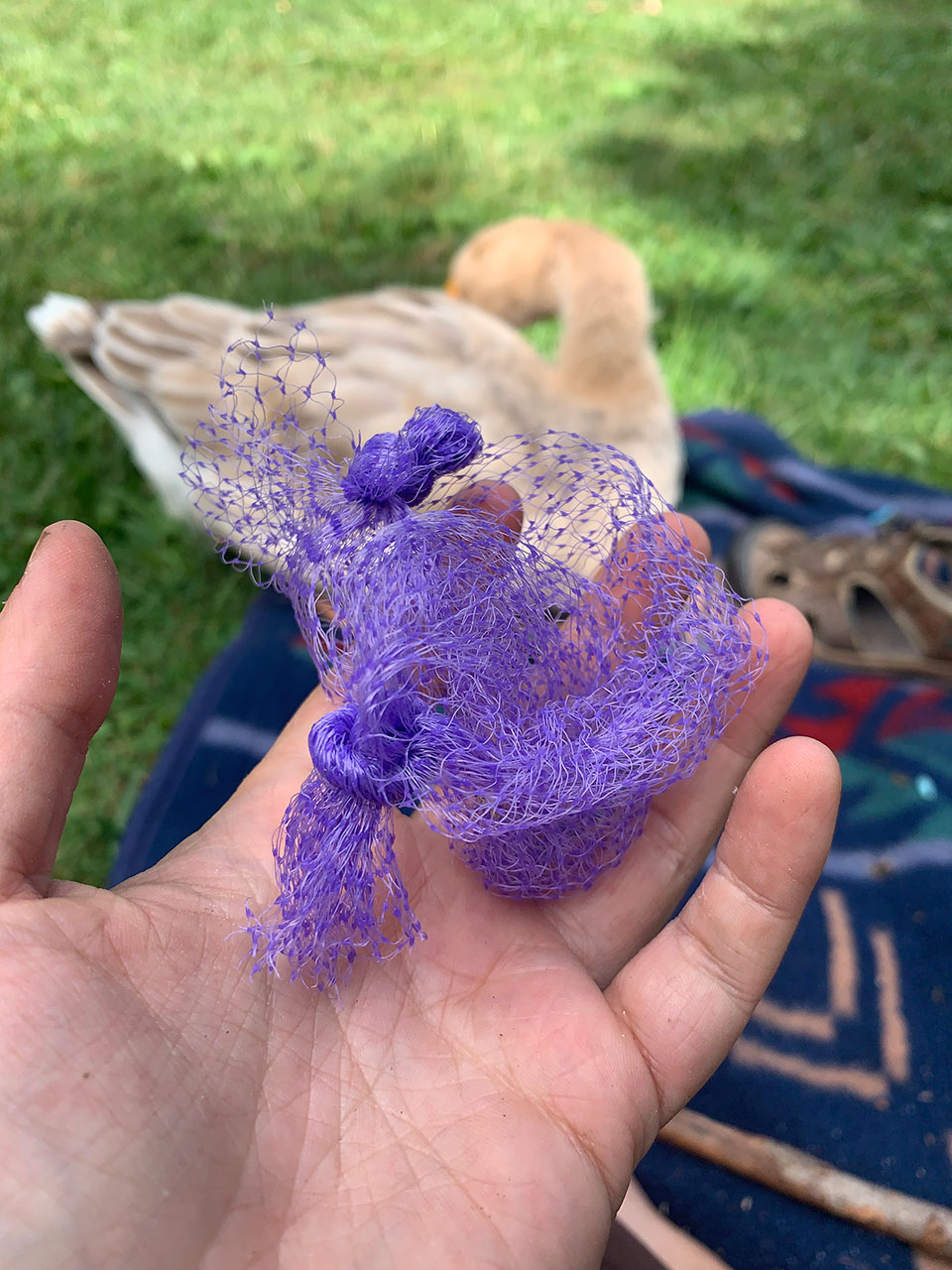
The world is full of this stuff! You can find it at your house, at your work, littered in parking lots, in the woods, at the beach…you get the idea!
Once you’ve gathered your supplies, you will also need some 1 or 2 liter soda bottles. If you don’t produce them yourself, a walk down the street of any urban or suburban area on recycling day is sure to produce many for you! Or just ask people you know who drink soda. I usually store these in the same box I am gathering up my materials.
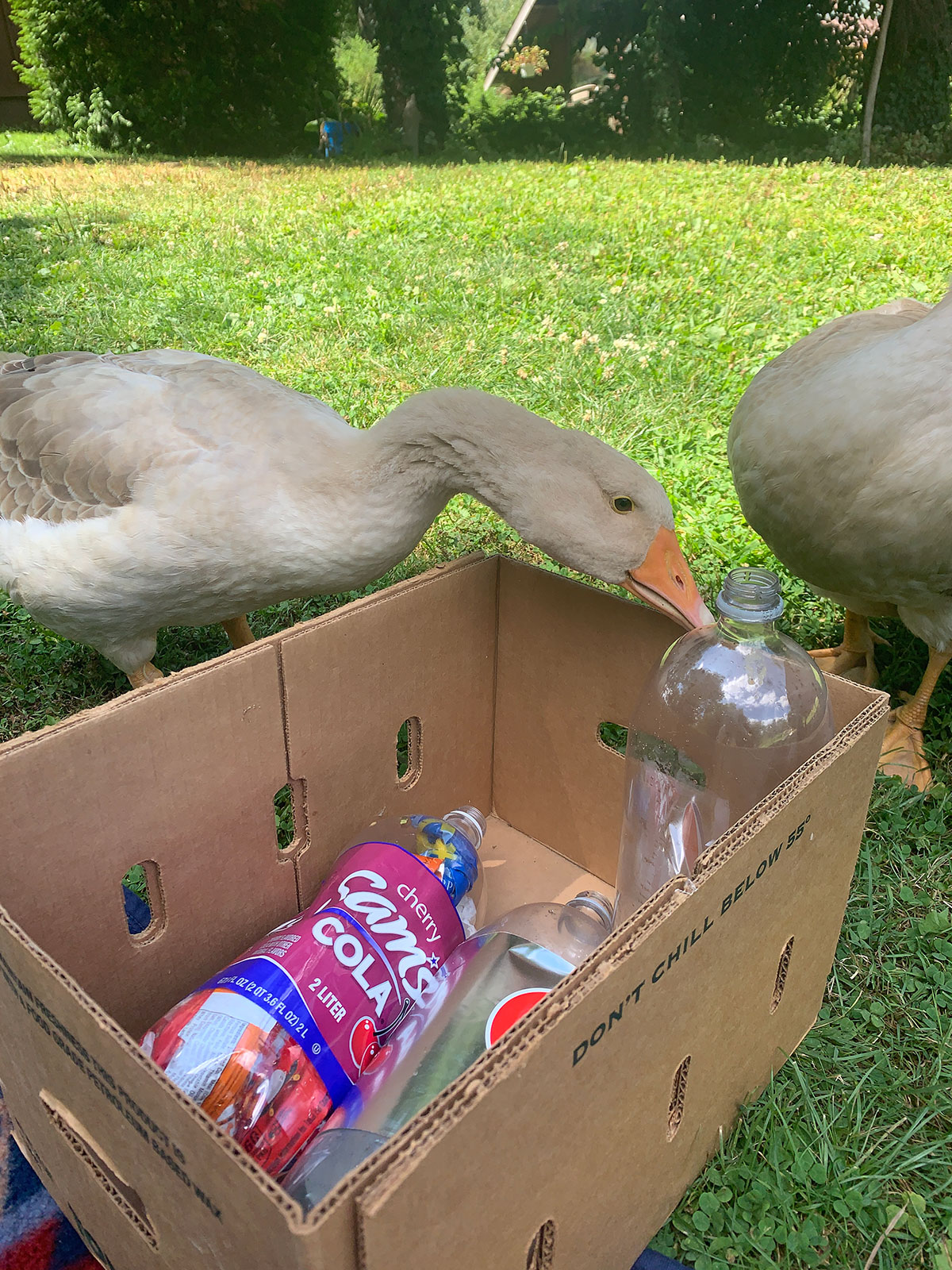
I usually gather stuff up for a while, and then make a few ecobricks at the same time. Once you hvae your material, you can begin stuffing your bottles. You might want to include some nice colored plastic on the bottom of your bottle. The reason you might want something nice colored is that when you build with them, if you choose to let the bottoms be seen, you can have different colors! Certainly, you want something soft so you can stuff it into the cracks, so don’t use any hard plastic for this purpose.
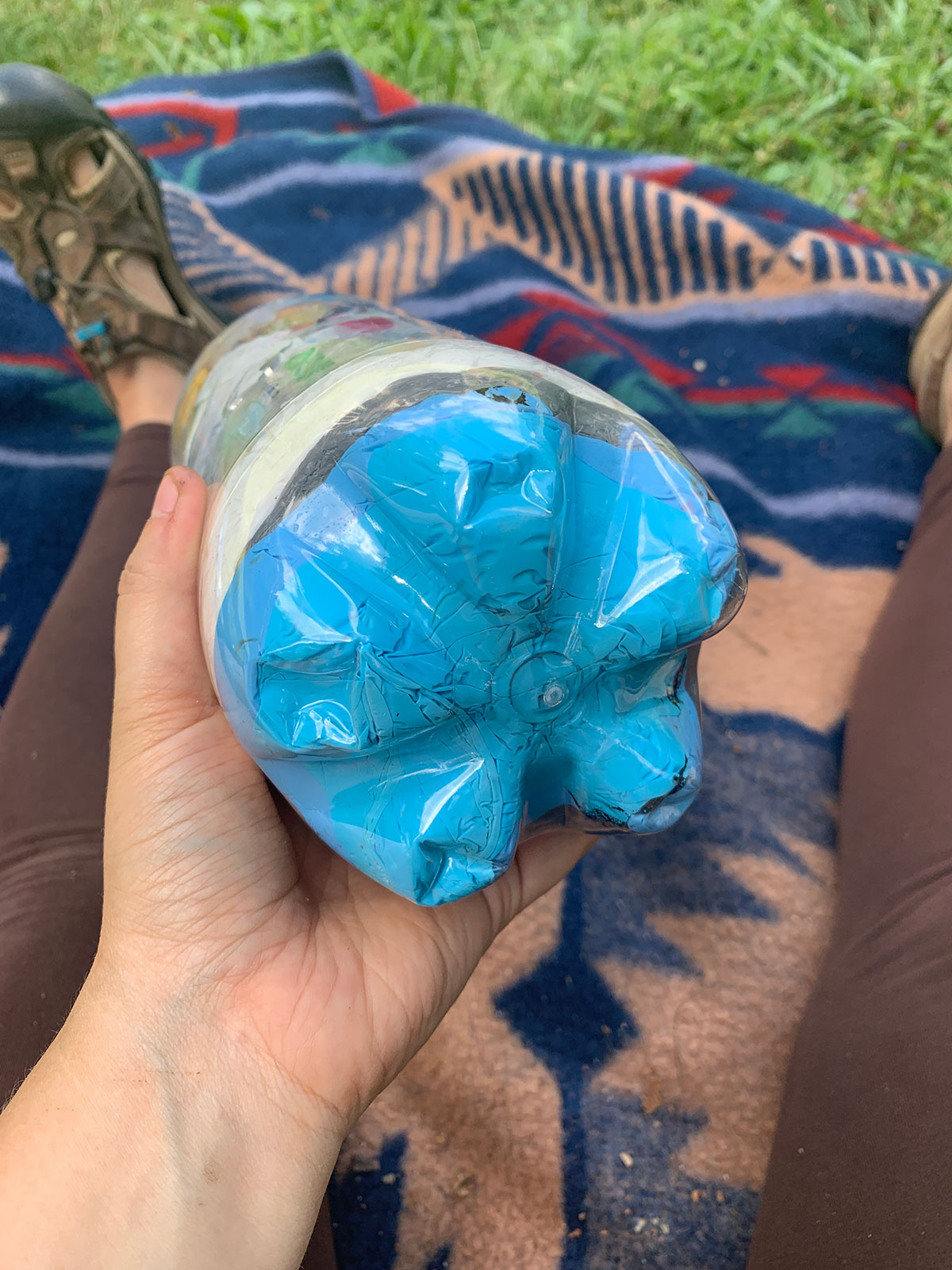
The technique is very simple, however, there are a few tricks to make really good bricks. First, you want a stick or dowel rod so as you get almost full, you can shove it down and keep stuffing further. Ecobricks need to be carefully compacted without much give or when used as a building material, a poor brick can compromise the structure. Stuffing the bricks as full as possible and using some muscle to push down the brick is necessary. Sometimes, larger materials can be twisted into the bricks. Other times, I’ve found I have to cut them into smaller pieces to have them fit (especially true for thicker plastics).
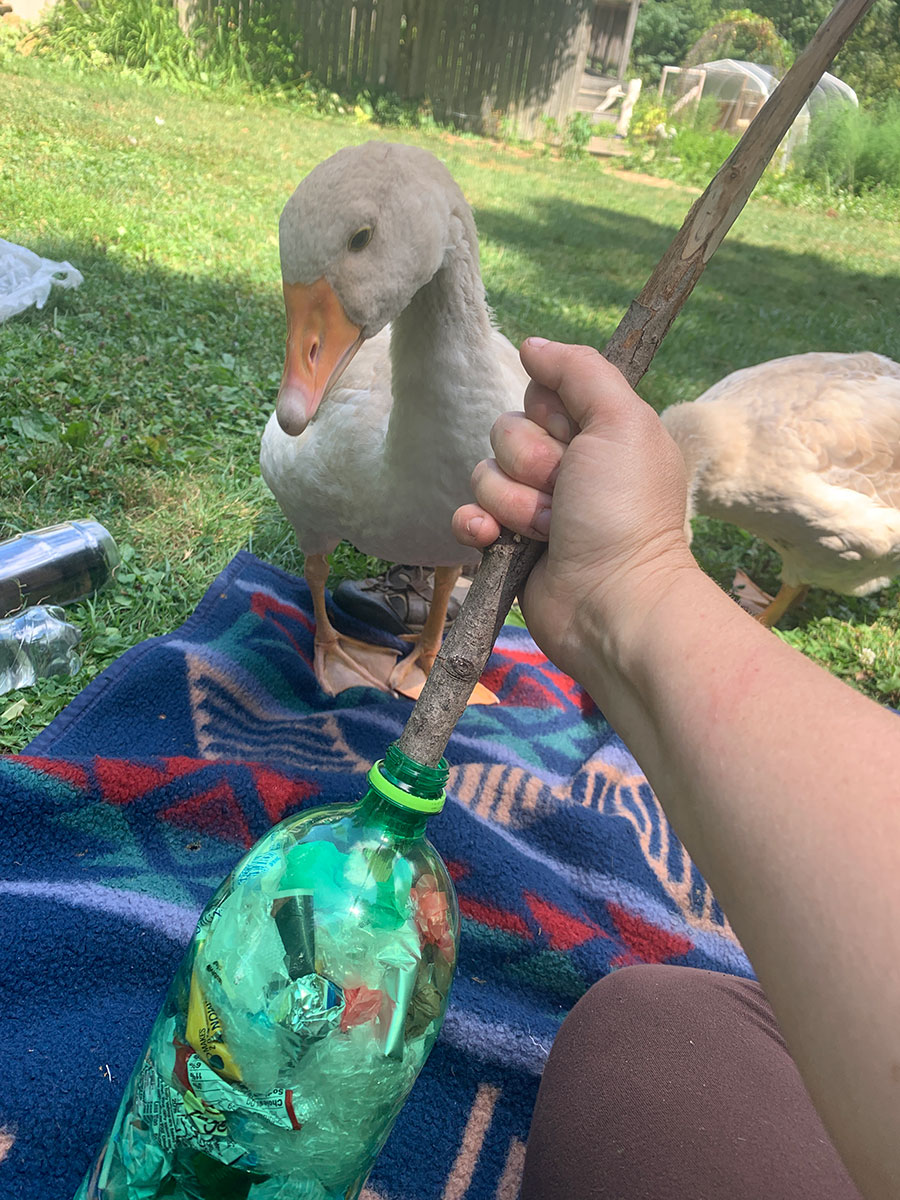
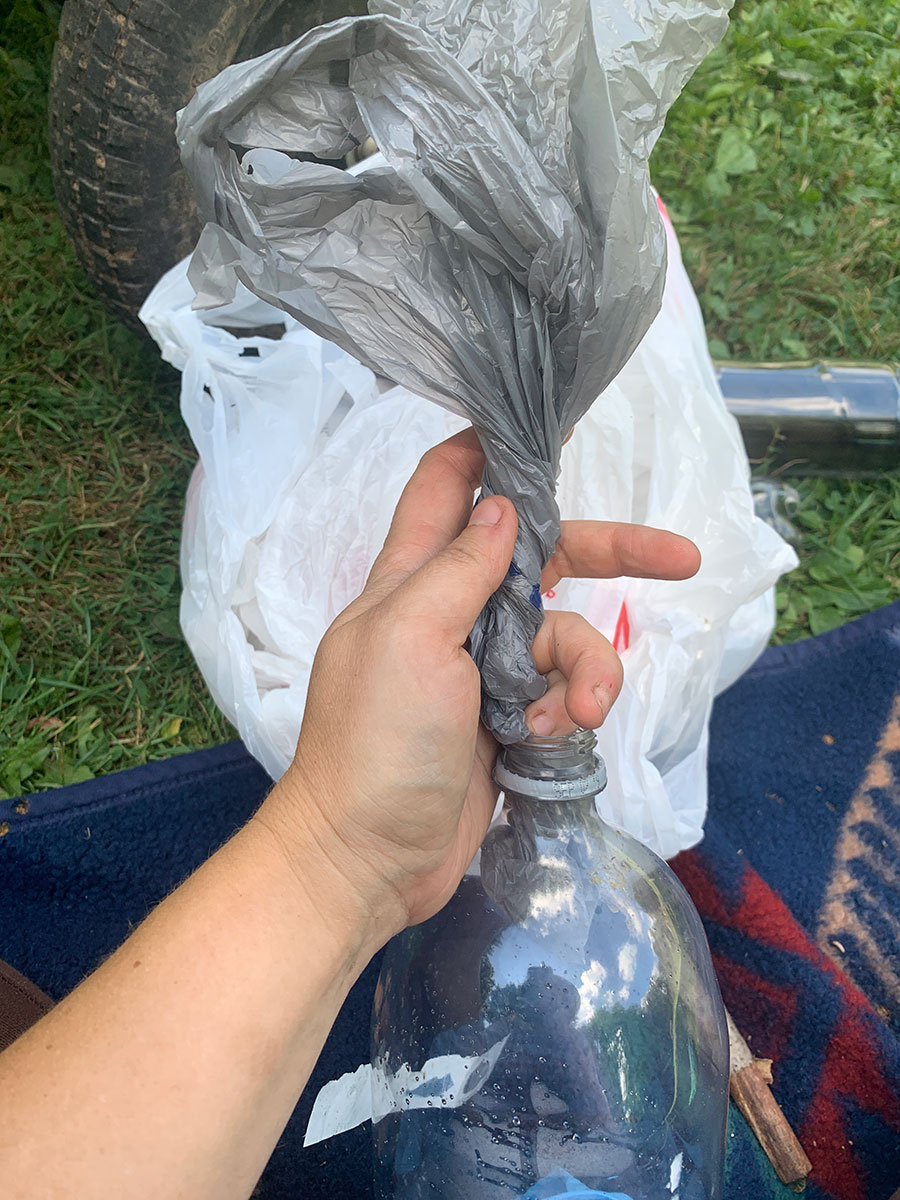
Fill up your ecobrick with plastic, stuffing down with the stick several times as it gets full. When you can’t add any more and the brick is firm, you can finish it by adding a cap. Your brick is done! If you want, you can register it at GoBrik.com and it will keep track for you of how much plastic you stored and how much C02 you saved. You’ll also get a brick number label and you can contribute your ecobrick to any number of ecobrick projects (or start one of your own).
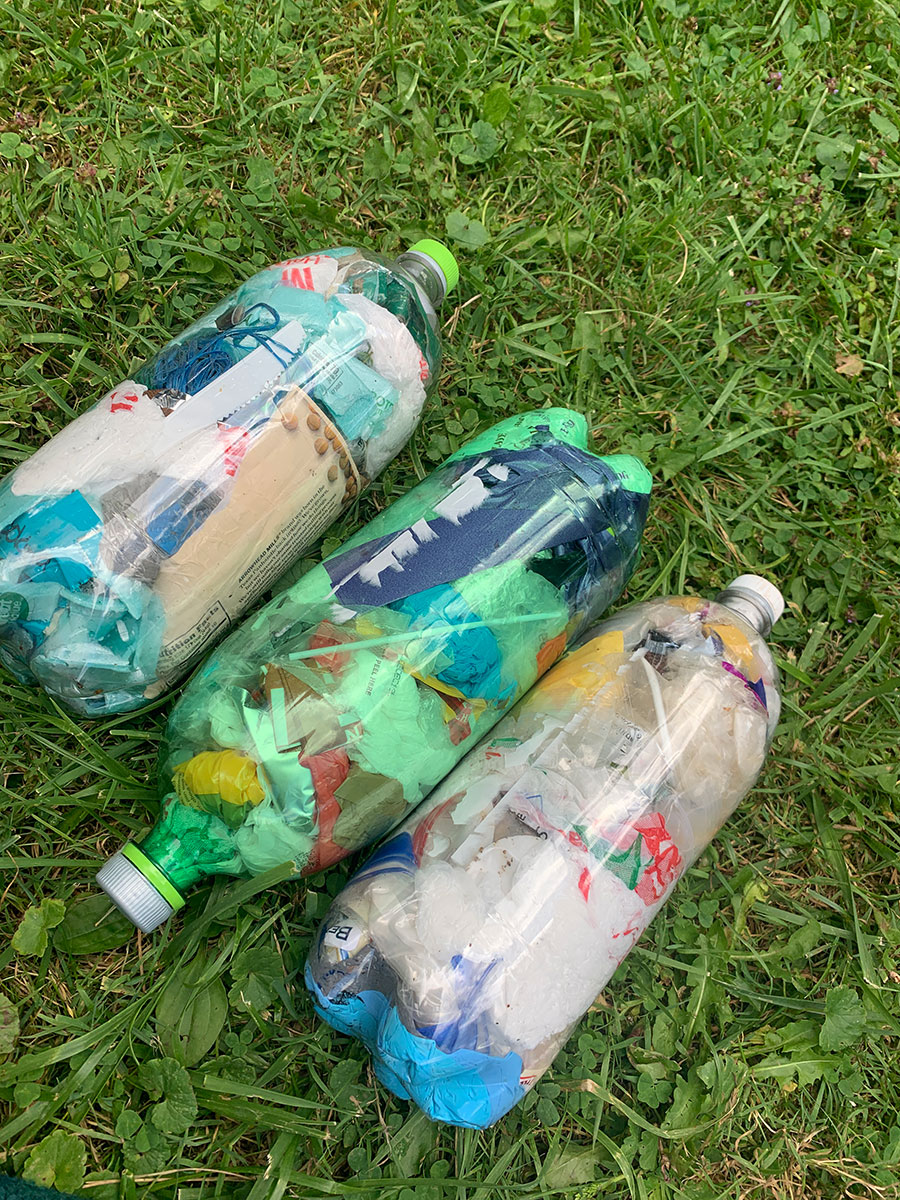
I have found that each ecobrick takes maybe 20 minutes to make, once you sit down and do it. I usually only make 2 at a time because it takes a lot of muscle to make them! They also take a lot more plastic than you would think–the last few I made, I counted and they took between 35-50 distinct pieces of plastic, depending on the size. You can also invite others to gather up their plastics and come over and have an ecobrick party!
Travel Ecobricks
What is fun about this process is that it has been deeply empowering. Rather than lamenting each piece of plastic I threw away that wasn’t recyclable, I’m now seeking out waste plastic for my bricks. For example, during a recent trip to Lake Erie with friends we had a few opportunities to do some beachcombing. I was picking up plastic all over the beach and stuffing it in a found 2 liter bottle, which I brought home. While I used to pick up trash only to recycle what I can and throw the rest away, I now can lock up that plastic in a brick that will be a resource. Just this past week, I had a picnic lunch for work as part of our opening year activities and I gathered up everyone’s waste straws, plastic bags, and chip bags for my brick.
There are lots of ways to easily collect plastic. Take an empty 2-liter bottle and a dowel rod with you when you go anywhere or anywhere you might spend time that generates plastic. A small one can fit in a purse or bag, even. Thus, I now have an ecobrick in my car, I have one at my workplace, I have one in my purse. I recently went camping and took one with me (and finished it in one weekend by collecting plastic out of the woods!) I am now handing out sticks and bottles to friends and family, and asking them to make them for me (yes, I need a lot for the project). For Lughnasadh recently, we had a grove event and the grove helped make part of a brick.
What I love about this is that everywhere I go, I am leaving the world a bit better by collecting that plastic and putting it to productive use.
Building Projects
There are great resources online that share different kinds of things you can do with the eocbricks. People make walls from them, benches, raised beds, furniture, even whole structures! Pinterest has a number of excellent boards where people are sharing ideas for using ecobricks, such as this one!
My long-term plan is to create an outdoor kitchen using ecobricks, which I am estimating will take at least 100 ecobricks in total. The ecobricks will help me create the basic surfaces on which I will build a cob oven and will also help build counter spaces and benches. Ecobricks, combined with cob (a natural building material of clay, sand, and straw) and with a good roof, will create a long-term structure that will offer us many years of use–for druid grove events and simple family meals! Ecobricks will be part of the entire kitchen, and I estimate that I will need at least 100 to complete the project! Here are some of my initial plans. Some of these things I’ve had the opportunity to build before, but others are new!
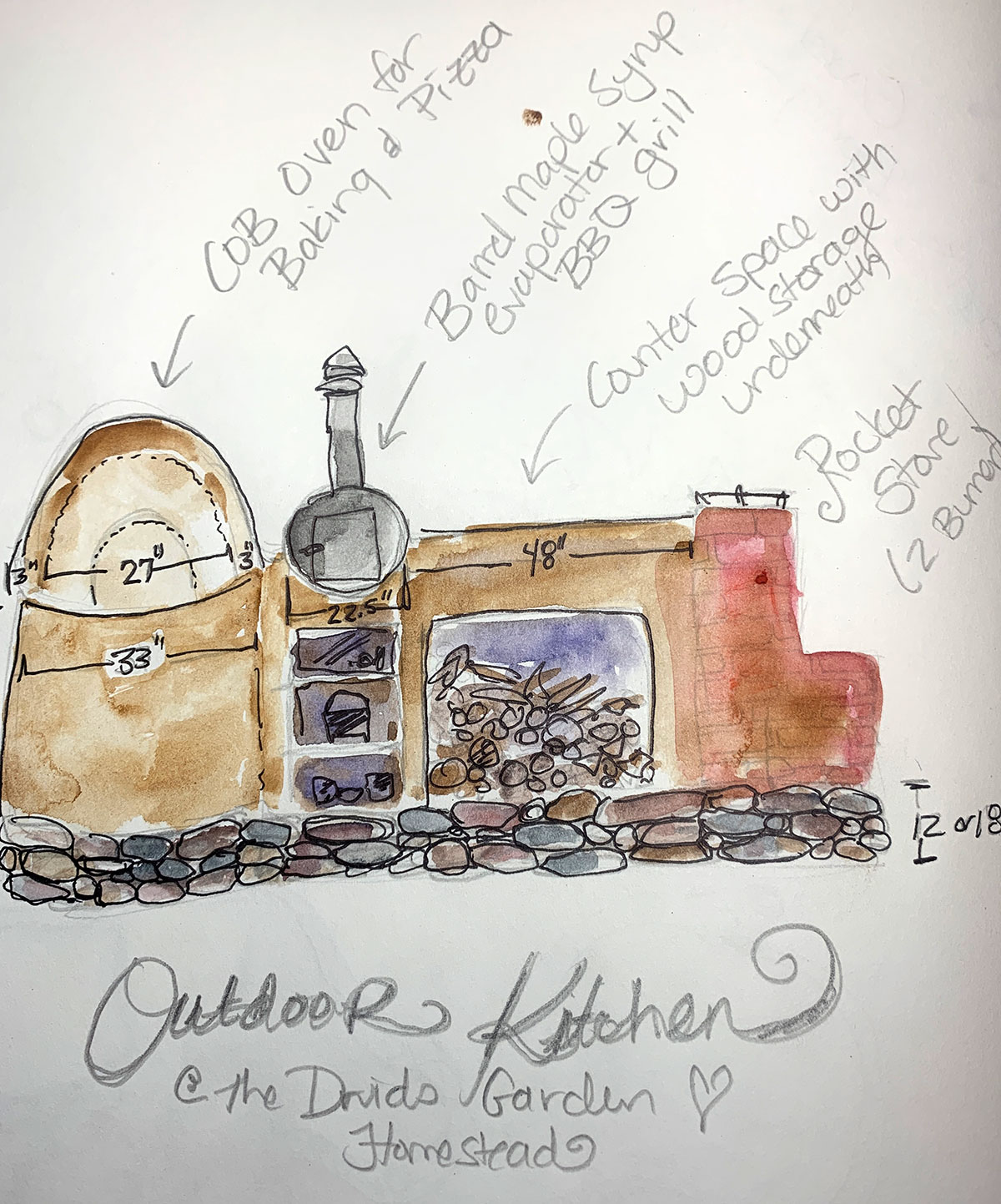
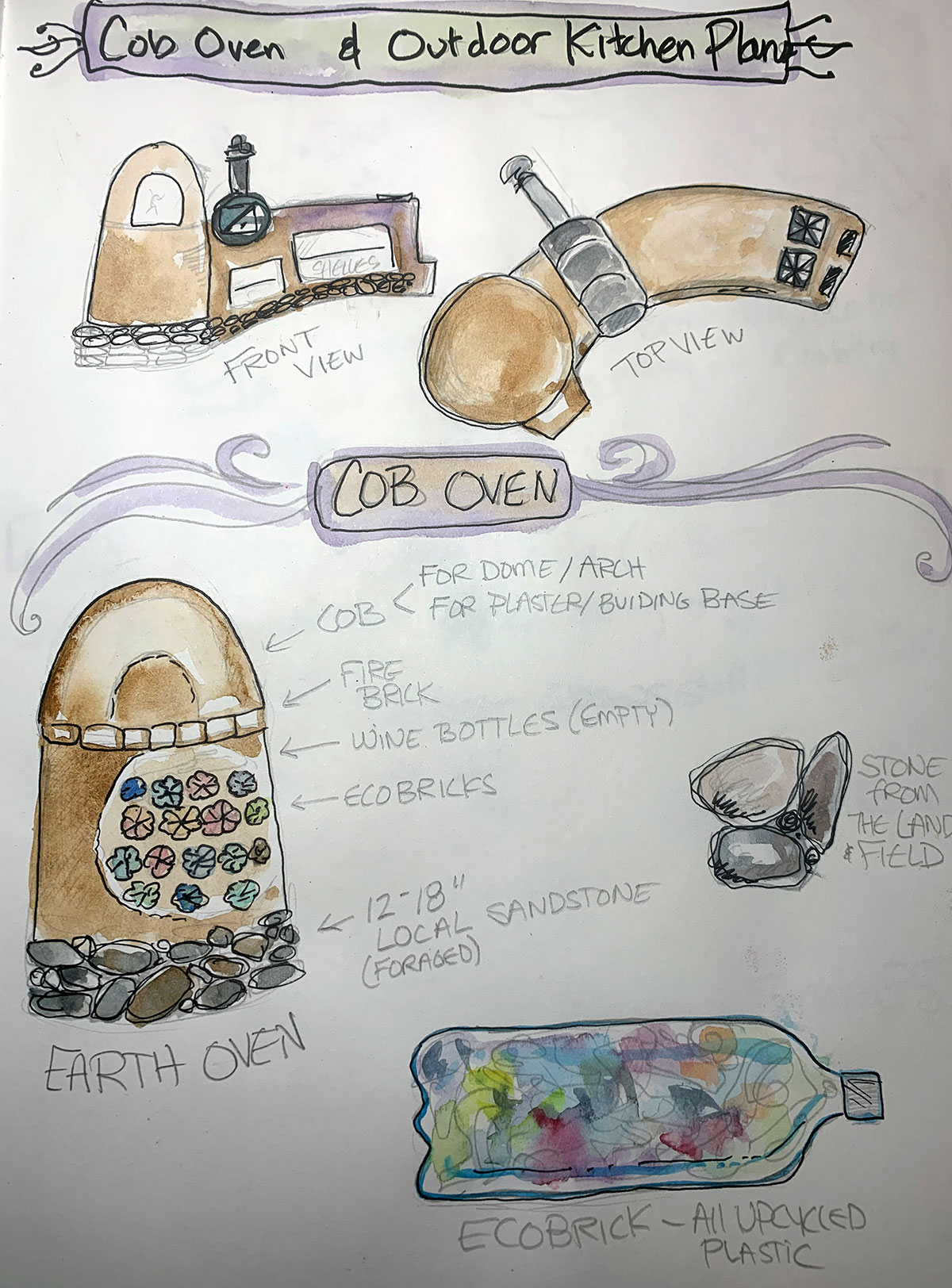
In terms of how to build walls, seats, and more, two such videos that offer a good introduction:
If you plan on making some ecobricks, please share your ideas and plans here! I would love to hear of anyone else who has a project in mind. Blessings!

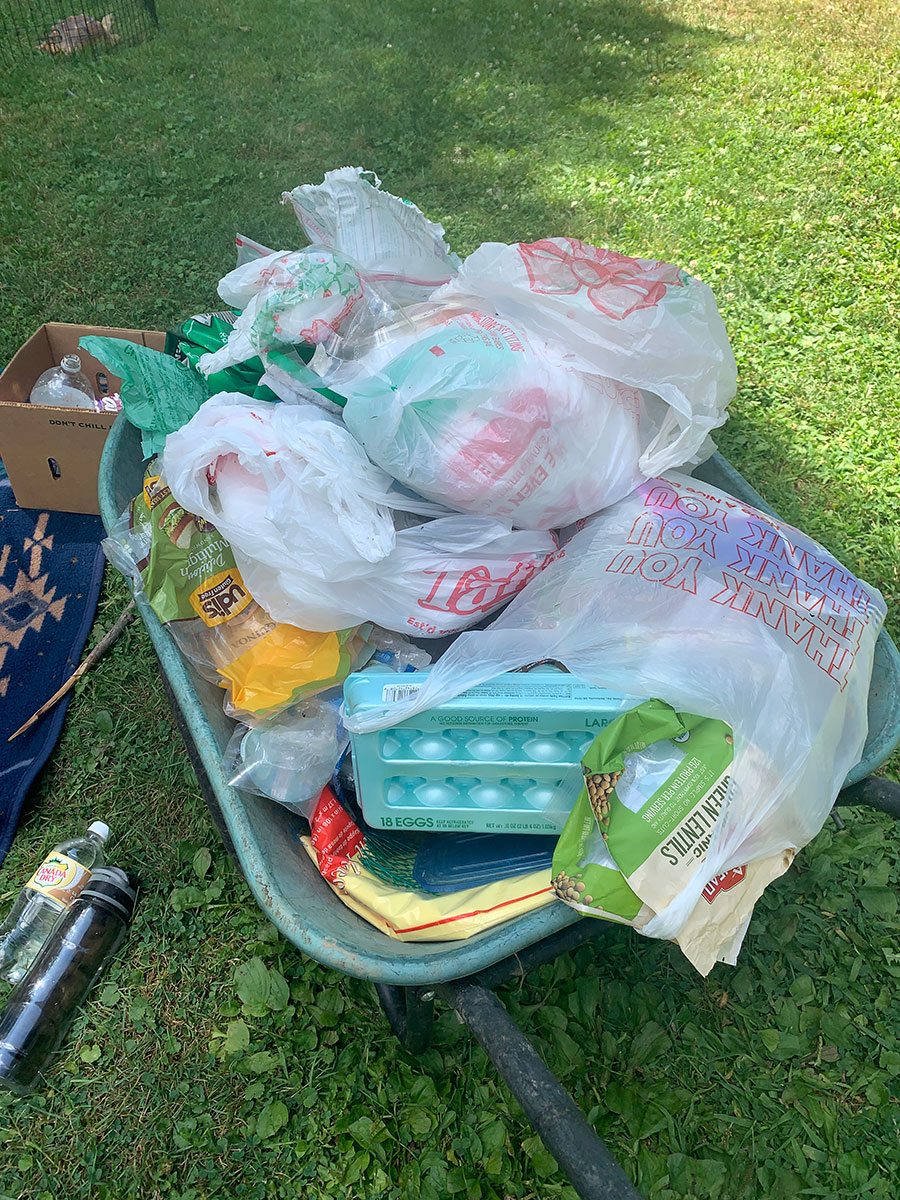
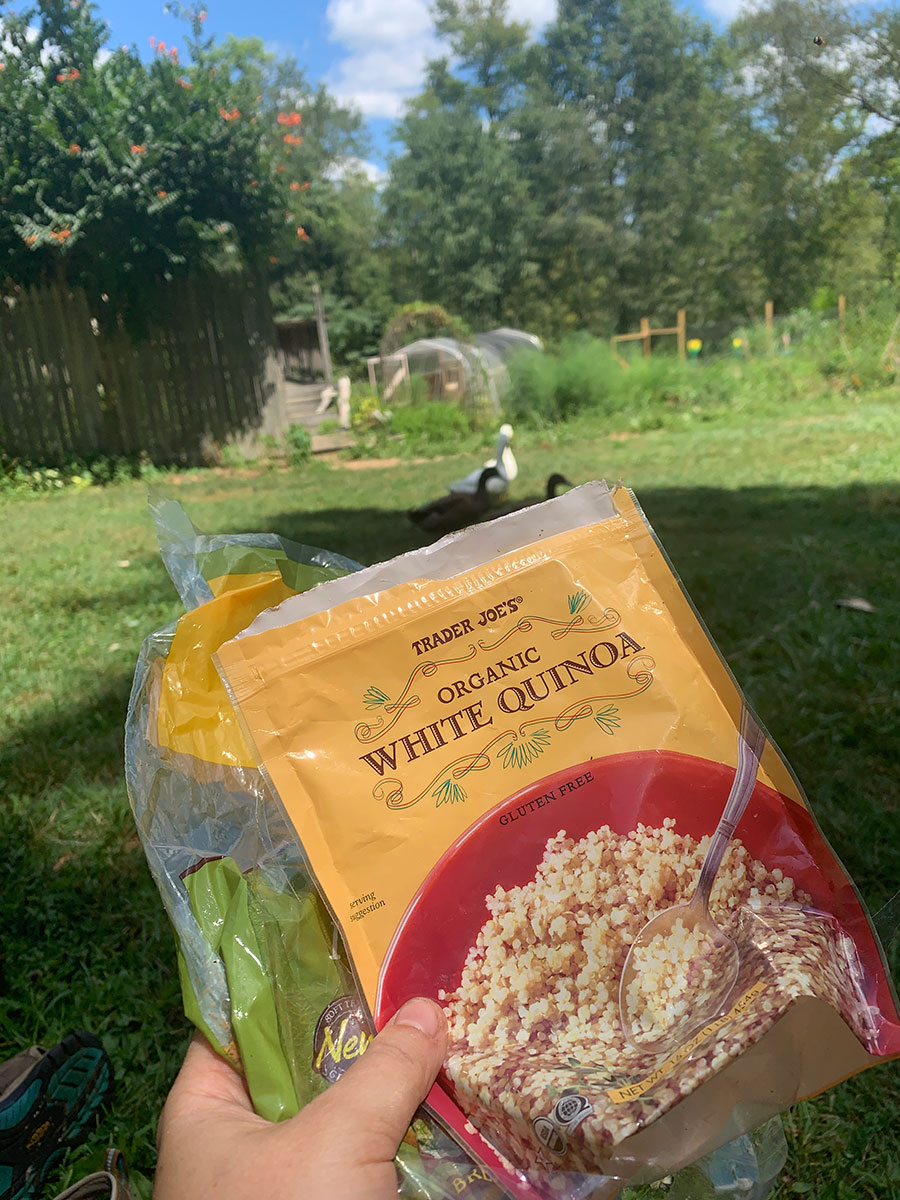



Reblogged this on Blue Dragon Journal.
Thanks for the reblog! 🙂
Sorry to say this, but ecobricks with plastic, are NOT sustainable!
Shennen Kowa – Great Peace,
Jesse-Blue “Oak” Forrest (Walking Thunder) THIS EARTH IS MY GOVERNMENT
>
Hi Jessie-Blue,
Thanks for your comment! How would you classify this practice then?
The way I see it is that they are a sustainable use of plastic, and allow one to take a personal responsibility for plastic that is already existing in the ecosystem. So while they are not a “sustainable resource” they are a very “sustainable” practice, in that they lock up waste plastic for productive use. But I’m happy to discuss! 🙂
Reblogged this on Paths I Walk.
Thanks for the reblog! 🙂
Interesting concept, especially the meditative/alchemical aspect, but I would be reluctant to make a raised bed for vegetable gardening, what with plastic chemicals leaching out into the soil, but then again I suppose the environment is already becoming saturated with such chemicals, so what difference would it make…? These are things I wrestle with. On a tangential note, I know of one intuitive/energetically sensitive person who recommends/practices asking local elementals, devas and tutelary spirits of the land to help us cleanse the land energetically of the poisons, chemicals leaching out, etc. because they will do it, but only if we ask them (free will etc.) She and I go back and forth on this… it’s our fault, our garbage, our waste, so why should *they* have to do our work? So I dunno… 🙄 I mean, she cleans up plastic in its physical form and reduces its use, etc. so there’s that, but still… 🙄
I think it would depend on how you would finish them in terms of the garden bed–especially if they were exposed to light. I’m primarily using them with cob, which would not be good for a vegetable garden bed.
On the devas: here are my thoughts, for what they are worth! I think that the land spirits are more willing to pitch in if they see our hard efforts as well. In other words, I can’t ask someone to clean up my own mess, but I could ask for help from a friend when I got overwhelmed with that mess. That’s kind of how I see that relationship!
Thanks for reading and blessings!
Good thoughts on the helping devas, Dana.
I can certainly go along with that!
This is a really neat concept. Instead of being zero waste and avoiding plastic and waste, you are seeking it out and leaving the surroundings cleaner as a result. Also, to me it seems that if you are using plastic waste as eco bricks, the waste becomes something productive as well as encompassing a cleaner environment. Thanks, this is a neat idea!
Hi Biohuntsville! I would argue that this is part of a zero waste lifestyle, it’s just a different angle on it. I produce zero plastic waste as a result of the ecobricks, and they are a resource I am using to build things :). But yes, the whole idea is that by seeking out waste beyond what I would generate (which isn’t much, since I have been focusing on zero waste for a long time), it helps more broadly :). Thanks for reading~!
Odd how plastic is a bi-product of the petro chem industry, actually it’s the other way round, when scientist started working with polymers at the turn of the last century oil was a bi-product. They needed something to do with that bi-product and here we are living in a world still reliant on fossil fuel and the combustion engine. So deep breath and excepting that we are where we are, I can’t really consider it a sustainable solution when we haven’t considered how we deal with huge numbers of breaking down plastic bricks in the future.
Hi Steph, thanks for your thoughts! Given that plastic takes anywhere from 500-2000 years to break down, and this method creates mostly permanent bricks (ones that would last longer than many others). I don’t think that the prime concern is how to deal with large numbers of bricks breaking down in the future (especially if they are inside buildings; that material could last for centuries)–but rather, how we get it out of the environment and into safe ways TO lock it up :). That’s my thinking!
You are 1,000 percent correct.
Mam Gaia is going to clean this house, with or without us.
What you are explicitly and properly doing is helping her clean and fix this mess.
We are in no way ever somehow separate from the natural world.
We are a part of the natural world and charged ecclesiastically/spiritually with the care, custody and control to be great stewards of this home of us known as earth.
This is the explicit law.
Thank you, Madam.
Thank you! It is certainly a way to clean up this mess and try to do some good. I don’t advoate for plastic, of course, but its here and its everywhere.
Love this article Dana!
Thanks~ 🙂
would gallon size plastic jugs work just as well? How do you deal with things like plastic bottle and jar lids?
I haven’t seen many examples of jugs–I wonder if they are harder to compress or if they disfiture if they aren’t round to begin with. Most of the bottles people seem to be using are round. Try it and see, perhaps?
In terms of the lids, the lids are put back on after you make the ecobrick. So you would not have any waste there :).
Thanks for reading!
The gallon jugs I have are round. I use white vinegar for cleaning, and collect many. The caps I was wondering about are not the jug caps, but caps and other hard plastic. We take several supplements (which used to come in glass bottles) and so get lots of plastic caps that apparently aren’t the so-called “recyclable” type of plastic, and I was wondering how you deal with hard plastics like that. I have been re-using stuff for decades. I re-use almost all my plastic bags, until they have deteriorated to the point of being unuseable. I use a lot of freezer bags (which get re-used over and over) because I raise a lot of my food and freeze many vegetables. There are alternatives, and I would love to use them, but they don’t come as large as the ones I use and are far too expensive to replace the dozens that I use. Glass jars get used for some things, but are not an efficient use of space for many of the vegetables I freeze. The ecobricks would be a good way to get rid of the freezer bags when they’re too old to use anymore. If I can free the time to make them. And I don’t have any building projects to use them in. I shared this post on FB hoping that some of my builder friends would see it and take note. Thanks for writing. I am too often rushing through online to read every post, but I never regret slowing down and taking time to read.
If they are round, they should totally work! 🙂 Let me know!
Thanks for the idea, dear Dana! This is very precious!
You are most welcome! Thank you for reading!
I adore your blog & smart ecological ideas!
Great Blog!
Thank you! 🙂
Hi Dana,
This is great! I think by living with my family’s waste rather than sending it away to the landfill we will be more motivated to reduce packaging. How clean do the plastics have to be and how do you clean them? Thanks.
Hi Chris! I don’t think they have to be perfectly clean. A lot of people make these from ocean refuse, which is probably full of all kinds of stuff. In terms of cleaning, if its something thats greasy, etc, I usually might just wash it in with my dirty dishes at the end. That seems to do the job!
Lovely.
I stumbled on the concept of ecobricks in a FB forum and as my raised wooden garden bed is reaching the end of its useful life, and my husband eyeballs the space for a hydroponic garden/koi pond… I’m wondering if we might use these bricks for the new structure.
Thanks for the blog plus the spiritual element.
Yeah, you can definitely use them in some kind of pond wall construction, especially if they aren’t exposed. Mine are going into my cob house I’m currently planning :).